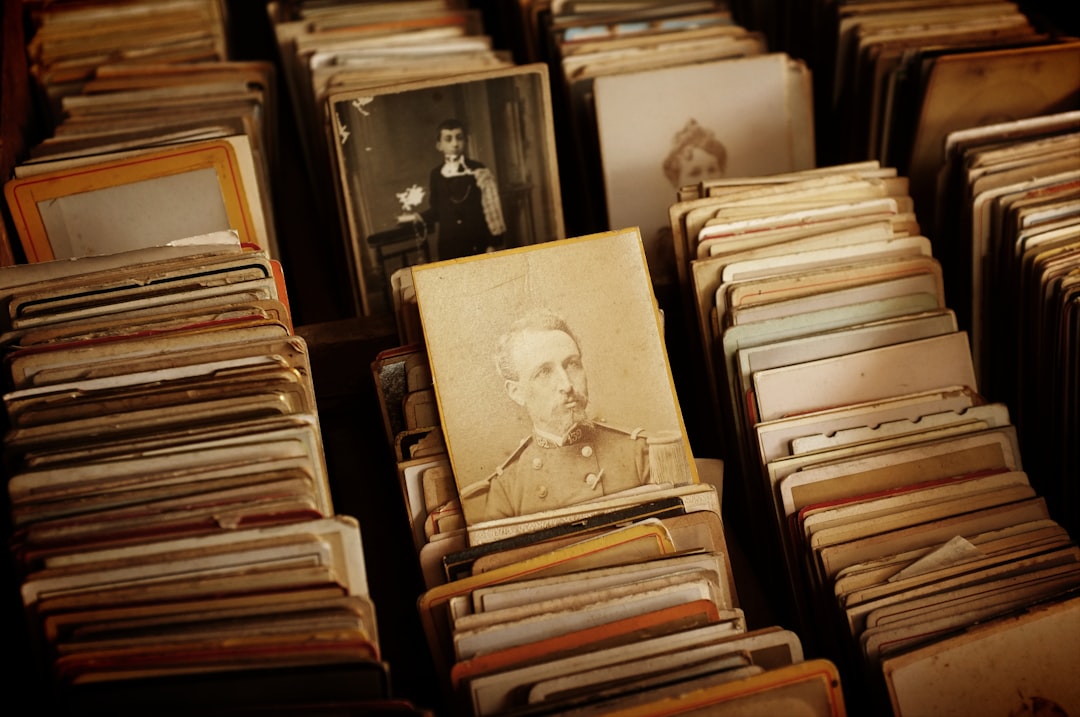No traveler’s bucket list would be complete without a visit to the world famous Angkor Wat Cambodia temple. It’s a profound and heavy experience. Exploring Angkor feels a bit like stepping into The Jungle Book. These massive Hindu temple ruins are almost 1,000 years old, and you can tell it. Everywhere you look, the once fantastic buildings have been shaped by time and nature — with broken walls, caved in ceilings, and huge tree roots and jungle foliage slowly consuming the temples. This travel guide for Angkor Wat temple will explain how to get there, where to stay, and how to see the best temples on the Angkor Wat circuits, along with an Angkor Wat map and everything else you need to know before you go! The Angkor Wat was a group of temples built by the Khmer empire in the 12th century. Angkor Wat means ‘temple city’ and the name fits, because it’s one of the biggest religious monuments in the world, covering more than 160 hectares (400 acres). Building the temple (in what is now the country of Cambodia) took more than 30 years, and involved 300,000 workers and more than 6,000 elephants! Angkor originally started as a Hindu temple, but was later transformed into a Buddhist temple near the end of the 12th century. It was neglected and then eventually rediscovered in the 1800s by a French explorer, who described it like this: One of these temples, a rival to that of Solomon, and erected by some ancient Michelangelo, might take an honorable place beside our most beautiful buildings. It is grander than anything left to us by Greece or Rome, and presents a sad contrast to the state of barbarism in which the nation is now plunged. Angkor Wat temple was damaged over the centuries by earthquakes, plant growth, looting, and wars. There were even shootouts at Angkor during the Khmer Rouge control in the 1970s. Only the ruins remain now. Today, the Angkor Wat is recognized as a UNESCO World Heritage site, and millions of tourists visit every year. It looks completely epic, doesn’t it? King Louie would feel right at home! The Angkor Wat is located on the outskirts of Siem Reap, in northwest Cambodia. The closest airport is Siem Reap-Angkor International Airport (SAI), which is served by a bunch of budget friendly airlines. Among other places, there are flights from Singapore (SIN), Bangkok (DMK), or Kuala Lumpur (KUL) to Siem Reap for as low as $40 USD. You can shop for flights to Siem Reap at Skyscanner. You can also travel to Angkor Wat Cambodia overland from Thailand. If you're looking for a good Siem Reap driver/guide to show you around, Klook has shared day tours starting from $12 USD. If you plan to do the sunrise tour, which I highly recommend, they also have a private Angkor Wat sunrise tour by tuk-tuk for $19 USD or a shared sunrise tour for $12 USD. We've used Klook for lots of tours and activities around the world, and they're great! Highly recommended. Book Now: Angkor Wat Shared Tour / Private Tour Here’s a rough Angkor Wat map that shows the temples around the Siem Reap area in Cambodia. Angkor Wat is located about 6.3 kilometers (4 miles) — or a quick 15 minute drive — from the town of Siem Reap, which you can see at the bottom of this map. There are lots of food and drink shacks scattered around the Angkor park, so you shouldn’t have too much trouble staying hydrated. The part that actually dehydrated me the most was the rush to get to the sunrise spot in the morning, so it’s a good idea to bring at least one bottle of water to start you out. This is a basic Angkor Wat map showing the temples in the Siem Reap area. Most tours of the Angkor Wat temple start with a visit to the ticket office, where all foreign visitors are required to buy tickets. The next stop is usually sunrise watching at the main temple, unless you opt out of doing this. After the sunrise, Angkor tours are split into two main routes — small circuit or grand circuit. Both are worthwhile, but each of them takes roughly an entire day. More on that later. You can tour the Angkor Wat by car or by tuk-tuk. A car with cold A/C is more comfortable and arguably safer on the road, but the tuk-tuk is cheaper and way more fun. Either way, you’ll still spend a lot of time walking in the Cambodian heat, which can be brutal — so bring some $1 US Dollar bills to use at the drink stands scattered around the park! As of 2024, the Angkor Wat entry fees from the main ticket office are as follows. Yes, these fees are very high by Cambodian standards, but it’s still worth it! You can pay by cash (US Dollars, Cambodian Riel, Thai Baht, Euro) or credit card (Visa, Mastercard, UnionPay, JCB, Discover and Diners Club). Take note that the 1 day Cambodia temple ticket is only valid for the day of purchase. You can’t buy it and then use it a few days later. However, the 3 day ticket is valid for 10 days from the date of purchase. You can choose any of those 3 days to visit the temples, so that means you can take a rest day between visits if you need it. The 7 day ticket is valid for a month from the date of purchase. You can pick any 7 days to visit the temples during that calendar month. The Angkor Wat is a temple and religious monument for Cambodia, so there’s a modest dress code for both men and women. What you wear should cover your knees and shoulders, otherwise you may be denied entry. They’re serious about this. Shorts are okay as long as they go below the knees. Most tours at the Angkor Wat start by watching the sunrise at the temples. I would highly recommend doing this, and I wrote a mini-guide for it here that explains the best photo spots and how to get to them. You’ll have to fight your way through crowds of tourists to get a front seat, but this is one sunrise you don’t want to miss! It’s one of the most popular and beautiful sunrise spots in the world. The sun comes up directly behind the main Cambodia temple, and it’s fantastic. Read More: Angkor Sunrise Tips All tours of the Angkor Wat are divided into two routes, or circuits, as they’re called — small circuit or grand circuit. Despite what the names would lead you to believe, both routes take roughly the same amount of time and visit roughly the same number of temples. You can spend a full day seeing either route. It’s not really possible to do both in the same day. Which circuit is better? That’s a tough question. It’s really just a matter of personal preference and what you’re wanting to see. For example, the ‘Tomb Raider temple’ (Ta Prohm) is on the small circuit. The grand circuit has some very nice things too. If I had to pick one, I’d probably give a slight edge to the small circuit, despite the name. In the list below, you can see some of the highlights of both Angkor Wat circuits, and decide for yourself which one looks most interesting. If you have enough time, see both! Both the small circuit and grand circuit begin at the main temple of Angkor Wat. The sunrise here is epic, and the temple itself is huge too. It’s worth spending at least an hour exploring here. This is one of my favorite temples in Angkor. It’s a small, barely known pyramid temple near Angkor Thom. You might have to ask your driver to stop here, because most tours don’t include it in the normal itinerary. This Cambodia temple is a hidden gem! This is a gate on the south side of the Angkor Thom temple complex. It’s in poor shape, but you can still drive or walk through it, so it makes for some cool photo ops. Bayon is one of the most important temples in Angkor Thom, and it has some of the best wall carvings in the area. This is also where you can see the famous stone faces that you’ve probably seen in lots of photos. This is one of the less known temples in Angkor Thom, and most tour groups don’t seem to go here. The carvings and doorways are good to explore. Ta Prohm is the famous ‘Tomb Raider temple’ used in the 2001 Angelina Jolie movie, where she’s exploring the temple ruins and the floor suddenly collapses under her feet. This is one of the most photogenic temples in Cambodia thanks to an incredible tree that’s growing on top of the ruins. It’s easy to see why it was used in the movie, because the atmosphere is just amazing. There are ancient Buddhist carvings and crumbling walls, decayed by time and swallowed up by giant jungle roots. Ta Prohm At one time more than 10,000 Khmer people lived at Ta Prohm, but it was abandoned in the 15th century after the fall of the Khmer empire, and became deserted for hundreds of years. Today, Ta Prohm is easily one of the most visited temples in the Angkor complex. It draws in thousands of tourists per day, so you might have to fight the crowds to get those bucket list photos you’re wanting! Crumbling walls of Ta Prohm More incredible trees and temples in Angkor Wat Cambodia! The tree roots at Banteay Kdei are absolutely massive, and they’re taking control of the buildings. Both the small circuit and grand circuit begin at the main temple of Angkor Wat. The sunrise here is epic, and the temple itself is huge too. It’s worth spending at least an hour exploring here. Most of the main temple is ruined, but it’s cool to see how nature is reclaiming what’s left of it. This is one of my fave stops on the grand circuit. This is an island temple in the middle of a little pond. It looks best if you see it right after the rainy season. Late in the dry season there’s not much water left (pictured). This is a smaller temple, but the best part is the stone doorway being consumed and held in place by a strangler tree. This temple is not in great shape compared to some of the others in Cambodia, but the highlight here would have to be the elephant statues in each corner of the temple. This is a big temple near the end of the Angkor Wat Cambodia grand circuit. Funerals were done here, so that may be why the temple looks so creepy. The buildings at the top of the pyramid are in the best shape, so be sure to take a look up there. This is a group of remote temples about 2.5 hours drive from Siem Reap. You can visit it on a day trip. The main building is a 7-tier pyramid in the forest, and a stairway leads to the top where you can get a nice view of the whole area. This is actually part of the Koh Ker area, but Pram temple is so awesome I thought it deserved its own separate mention. These are ancient temples being swallowed up by huge strangler trees and you must see them if you have time to take a day trip out of Siem Reap. This may be my favorite Cambodia temple after the Angkor Wat itself. This temple is a 1 hour drive from Siem Reap, and it can be combined with a grand/small circuit tour if you pay the driver a bit extra. The red sandstone colors are nice, and it’s known for having some of the best stone carvings out of all the Khmer temples. This temple is about 1.5 hours drive from Siem Reap, and it can be combined with Koh Ker as a full day trip. The temple is mostly ruined, but that’s part of what makes it cool! This group of temples is only a 30 minute drive from Siem Reap, making it easy to combine with something else as a full day trip. The Roluos temples date back to the 9th century, making them some of the oldest Khmer temples in Cambodia. The town of Siem Reap is just a 5 minute drive from the Angkor Wat Cambodia temples, and that’s where you’ll want to book a hotel during your stay. There are lots of great restaurants, hotels, and massage places in Siem Reap for very affordable prices. We stayed at the 4-star La Residence Blanc D'Angkor in Siem Reap. It was $18 USD per night for a clean double room with cold A/C, work desk, refrigerator, wardrobe, and more. There's also an on-site restaurant and pool. The staff there is amazingly friendly, and I love the epic wall art showing scenes from the Angkor Wat. It sets the mood for exploring some Cambodian temple ruins. Prices may fluctuate from time to time, so just keep an eye out for a good deal. We stayed at this 4-star hotel in Siem Reap for $18 USD This was the pool at our hotel Here’s a sample Angkor Wat itinerary you can follow if you spend up to 4 days in Siem Reap, Cambodia: For more detailed suggestions, you can check out my Angkor Wat itinerary guide in the link below. Read More: Angkor Wat Itinerary Yes, I think Cambodia is safe, and I’ve visited the country many times. It is one of the world’s poorest countries, but violent crime and terrorism are not major issues here in recent years. One problem in Cambodia is drive-by bag or phone snatchings, especially in Phnom Penh, but occasionally in Siem Reap too. The best way to prevent this is to keep your bag slung across your chest so it’s not easy to grab, and put your phone away when you’re riding around in traffic in a tuk-tuk. Nowhere in the world is perfectly safe, but Cambodia receives millions of tourists every year, and most of them visit Siem Reap and the Angkor Wat. If you’re looking to avoid the biggest seasonal crowds at Angkor, watch out for the Chinese New Year, which falls sometime in January or February every year. The climate of Cambodia is tropical, so the weather is hot and humid year round. The rainy season runs from May to November (but especially the months of September and October), and the sunny season runs from December to April. It’s still possible to visit Angkor Wat in the rainy season, but give yourself some extra days as a buffer in case of bad weather. We’ve visited Cambodia several times in the month of May, and the weather was always bright and sunny without a drop of rain. Try to get an early start in the morning to avoid the heat and crowds. Spend at least one morning seeing the famous Angkor Wat sunrise at the temples. Happy travels!










